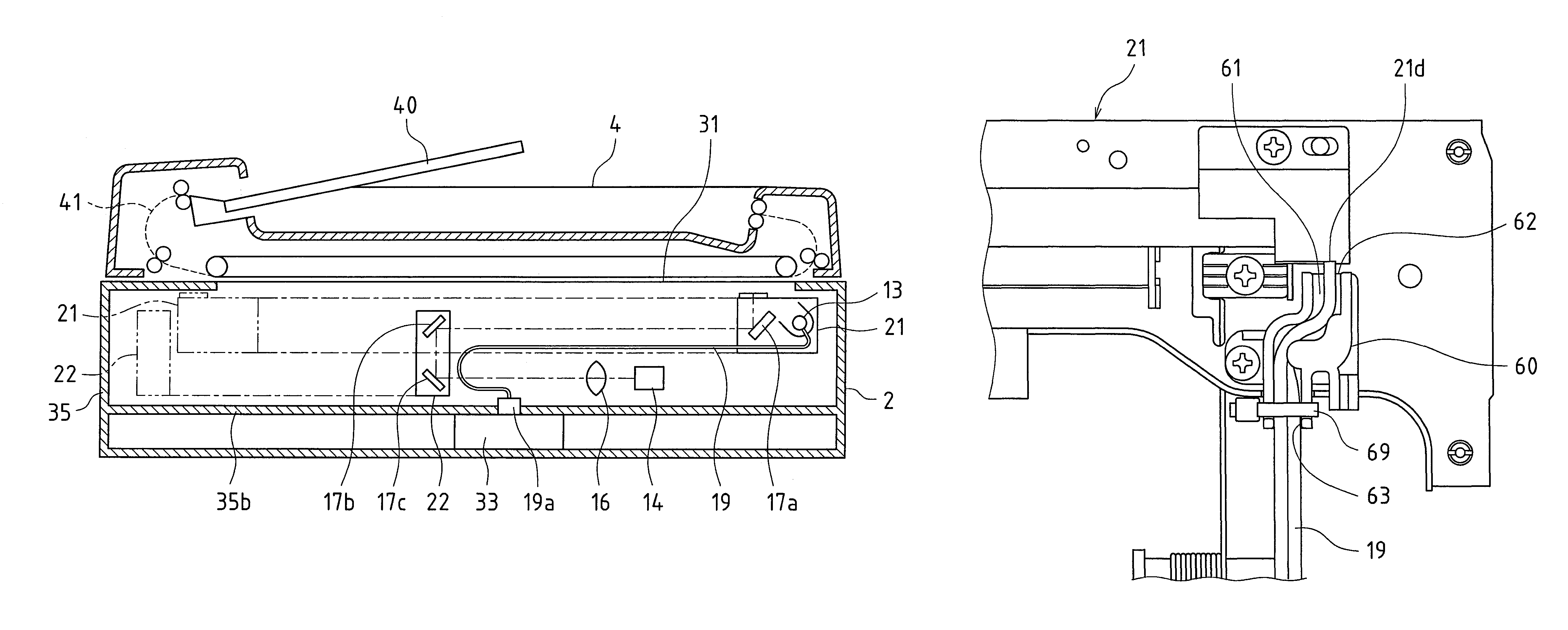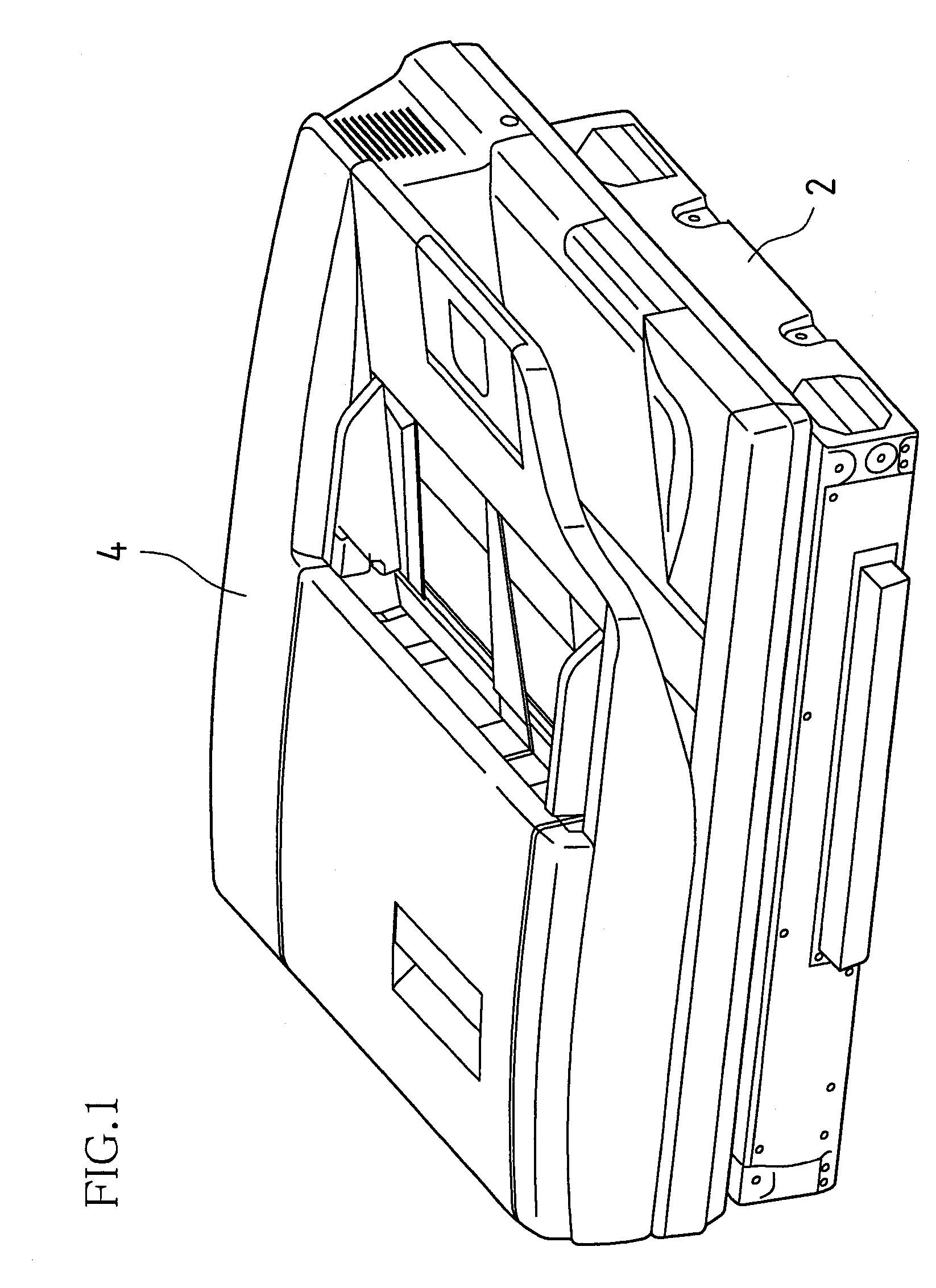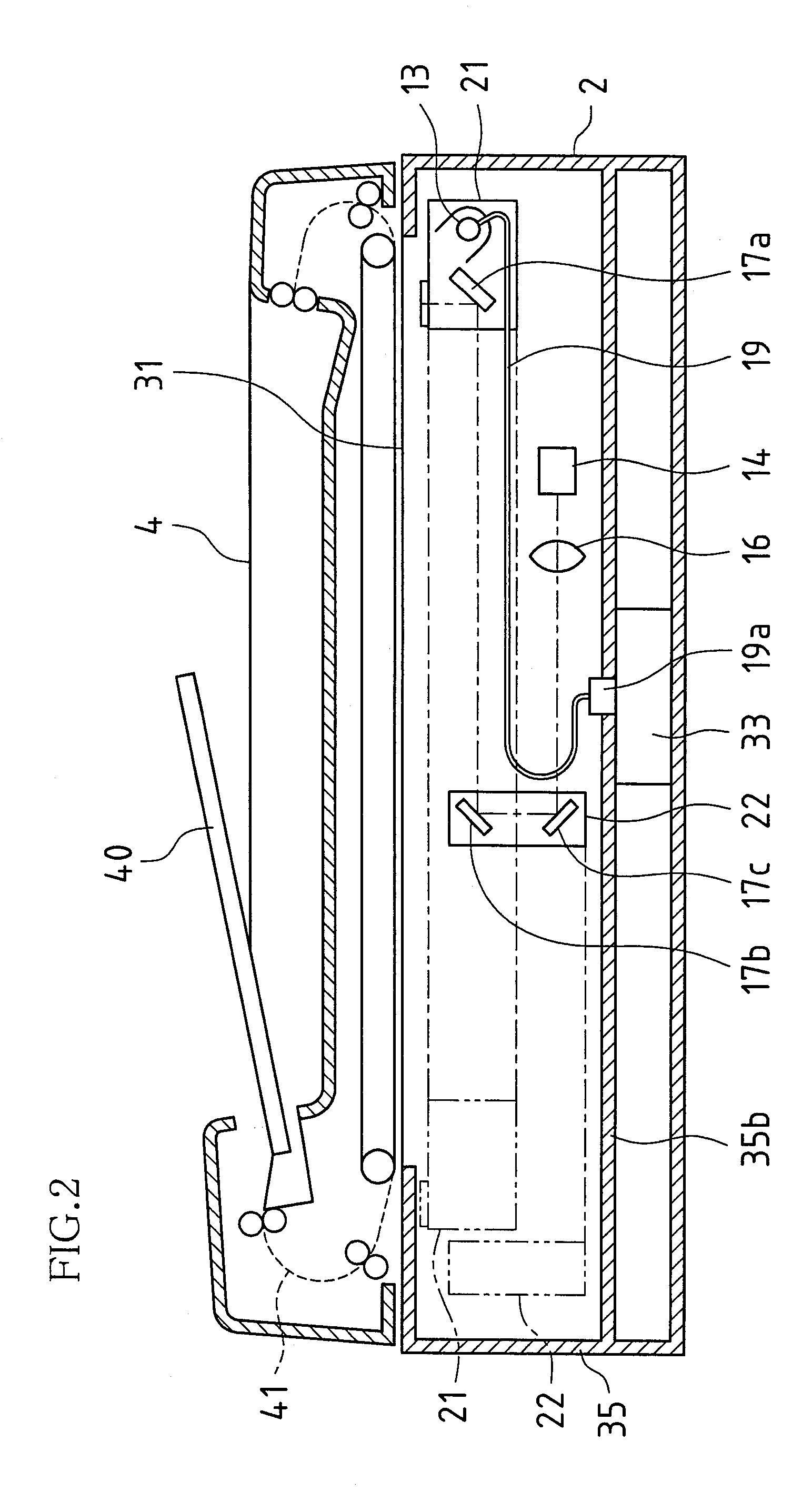Structure supporting distribution cable of document reading apparatus
a technology for supporting distribution cables and document reading devices, which is applied in the direction of supporting structure mounting, electrical apparatus, pictoral communication, etc., can solve the problems of blurred document image, inability to read document images smoothly, etc., and achieve the restriction of repulsive stress, restricted repulsive stress, and restricted effect of distribution cabl
- Summary
- Abstract
- Description
- Claims
- Application Information
AI Technical Summary
Benefits of technology
Problems solved by technology
Method used
Image
Examples
Embodiment Construction
[0034]Hereinafter, embodiments of the present invention will be described in detail with reference to the accompanying drawings.
[0035]Overall Description of the Document Reading Apparatus
[0036]FIG. 1 shows the entire appearance of a document reading apparatus 2 according to the present embodiment. Also, FIG. 2 is a schematic cross-sectional view of the document reading apparatus 2 shown in FIG. 1.
[0037]On top of the document reading apparatus 2 of the present embodiment, an automatic document feeder (ADF) 4 is provided that automatically transports a document along a document transport path.
[0038]The document reading apparatus 2 includes a document placement table 31 arranged in the top face of a frame 35 that forms an outer frame, a first scanning unit 21, a second scanning unit 22 and an imaging lens 16, image sensing device (CCD) 14, and a drive circuit board 33.
[0039]The first scanning unit 21 includes a light source lamp 13, a first mirror 17a and the like. The light source lam...
PUM
 Login to View More
Login to View More Abstract
Description
Claims
Application Information
 Login to View More
Login to View More - R&D
- Intellectual Property
- Life Sciences
- Materials
- Tech Scout
- Unparalleled Data Quality
- Higher Quality Content
- 60% Fewer Hallucinations
Browse by: Latest US Patents, China's latest patents, Technical Efficacy Thesaurus, Application Domain, Technology Topic, Popular Technical Reports.
© 2025 PatSnap. All rights reserved.Legal|Privacy policy|Modern Slavery Act Transparency Statement|Sitemap|About US| Contact US: help@patsnap.com



